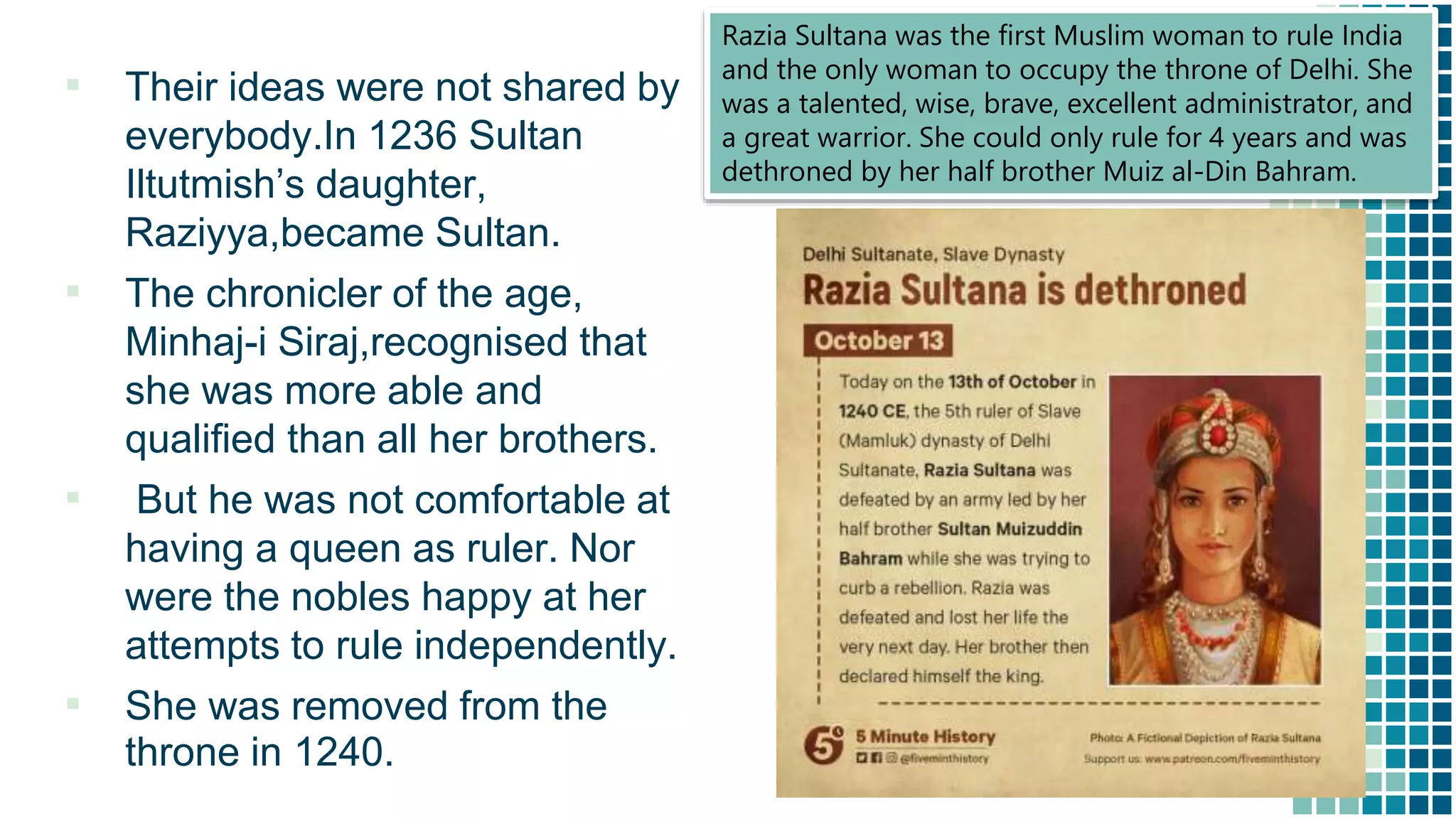The document discusses the history of Delhi as a capital city under different kingdoms and sultanates. It notes that Delhi first became a capital under the Tomara Rajputs in the 12th century, and grew as an important commercial center under the Tomaras and their successors, the Chauhans. It then summarizes how the Delhi Sultanate, founded in the early 13th century, transformed Delhi into a capital that controlled vast areas. The five dynasties that made up the Delhi Sultanate are identified in Table 1. The document discusses administration and governance and challenges faced by the sultanates in controlling distant areas.





























